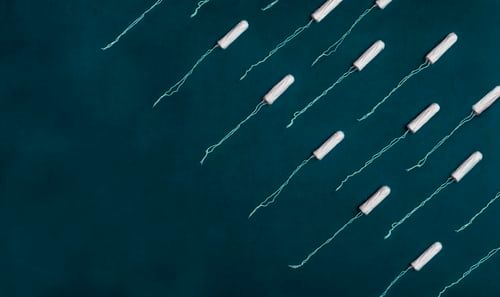After discovering that the rate of loss is rising, experts warned that if action is not taken to address a decline in sperm count, humans may face a reproductive crisis.
According to a study in the journal Human Reproduction Update, which relied on 153 estimates from men who were likely uninformed of their viability, the average sperm concentration decreased by 51.6% between 1973 and 2018 from an estimated 101.2 million per millilitre to 49.0 million per millilitre. During the same time span, the overall sperm count decreased by 62.3%.
Also Read| Winter storm watch on Wednesday night in Cleaveland, other parts of snowbelt
Sperm concentration has more than halved over the previous 40 years, according to research conducted by the same team and published in 2017. The findings, however, at the time were limited to a region that included Europe, North America, and Australia due to a lack of data for other regions of the world. More recent data from 53 nations are included in the most recent analysis.
In addition to the area previously studied, declines in sperm concentration were also observed in Central and South America, Africa, and Asia.
Additionally, the rate of decline seems to be accelerating: the researchers found that sperm concentrations decreased by 1.16% annually after taking a look at data gathered across all continents since 1972. The decline, however, was 2.64% per year when they only considered information gathered since the year 2000.
“I believe this is yet another sign that something is wrong with the world and that we must act.” So, yes, I believe it is a crisis that we should address now, before it reaches a tipping point that may be irreversible,” said Prof Hagai Levine, first author of the study from the Hebrew University of Jerusalem.
Previous research has suggested that fertility is jeopardised when sperm concentration falls below 40m per ml. While the most recent estimate is above this threshold, Levine points out that it is a mean figure, implying that the percentage of men below this threshold has increased.
“Such a decline clearly represents a decline in the population’s reproductive capacity,” he said.
While the study took into account factors such as age and how long men had gone without ejaculating, and excluded men who were known to be infertile, it has limitations, including the fact that it did not look at other markers of sperm quality.
Allan Pacey, a professor of andrology at the University of Sheffield who was not involved in the research, praised the findings but expressed uncertainty about whether there is a decline.
While the cause of the apparent trend is unknown, one theory is that endocrine-disrupting substances or other environmental factors may be at play and affect the foetus while it is still in the womb. According to experts, factors like smoking, drinking, being overweight, and eating poorly may also be involved, and leading a healthy lifestyle may help to increase sperm counts.
Also Read| 5 celebrities diagnosed with amyotrophic lateral sclerosis
The new study, according to Tina Kold Jensen of the University of Southern Denmark, recapitulated a worrying trend. No matter how many studies you include, you keep finding the same trend, she said, and that concerned her.
The latest data, according to Prof. Richard Sharpe of the University of Edinburgh, an authority on male reproductive health, appear to suggest that the rise is a global phenomena.
According to Sharpe, the decline may make it more difficult for couples to conceive, and for many, time is not on their side because they wait until the woman is in her 30s or 40s, when her fertility has already declined, before trying to conceive.






